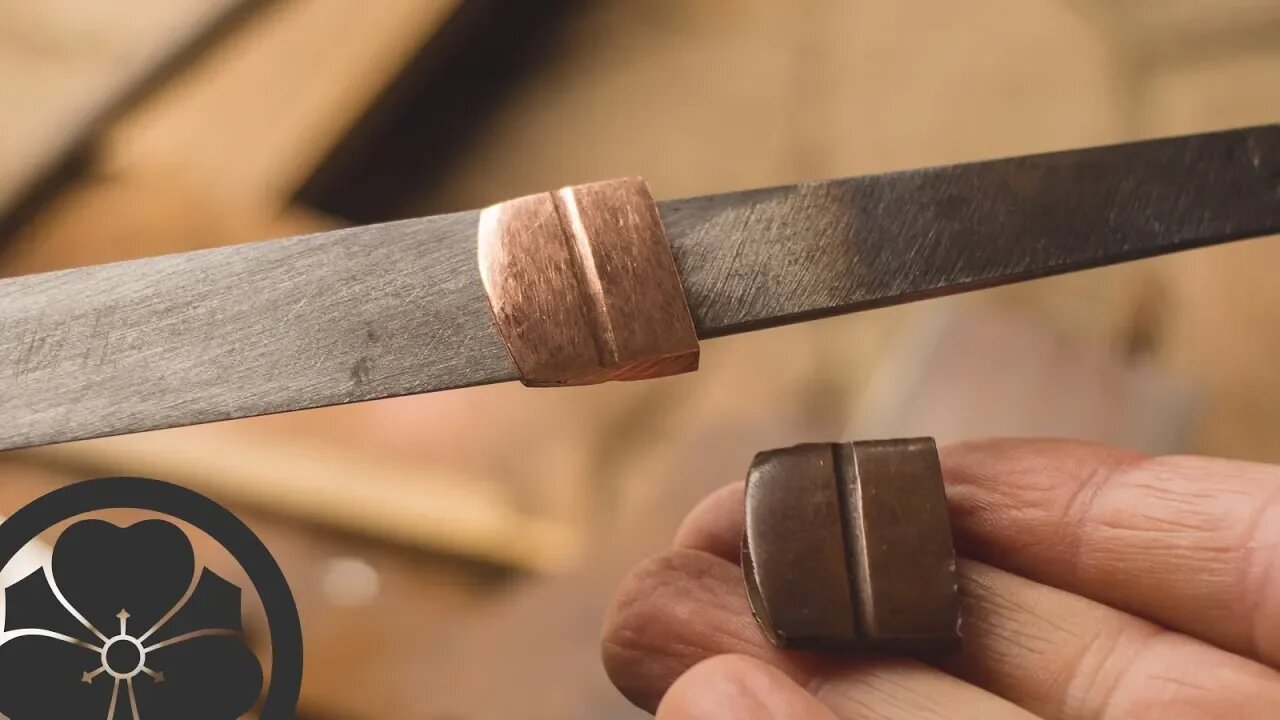Premium Only Content

TLDW #25 - First Lighting of the Forge & Antique Habaki Utsushi
**WARNING: This is the longer process version intended for serious students of knifemaking. Watch the intro of lighting the forge here: https://youtu.be/jr4p5DCy4M0 ***more info below...
First lighting of the newly rebuilt charcoal forge in the island kajiba, more info on the project here: http://islandblacksmith.ca/tag/island-forge/ ...followed by stamping the tang and then hand forging and filing a classical tanto style habaki, silver soldered in the charcoal forge and closely based on an antique Edo period habaki. Polishing and patinating will be done after the saya has been carved.
The bending of the jacket is missing as the camera battery had died, that stage is shown in this video: https://www.youtube.com/watch?v=gyCsxnXKi0o
Watch the machigane area and you can see the solder begin to melt and flow around 26:52 until it is pulled out to stop the heating. The fuigo allows very precise air mix and heat control. When soldering habaki this way, some points are:
ensuring the fit is very tight (solder does not fill gaps),
cleaning the metal surfaces well to remove oxide and contaminants,
using a flux to prevent oxidation while heating (in this case borax and water),
forming a charcoal "oven" away from the direct air blast,
controlling the airflow for a reducing environment,
heating just to the flow temperature,
removing from the heat immediately,
allowing to slowly cool in air next to the coals,
pickling off any remaining flux in vinegar before fitting to the blade.
Note that silver solder (more accurately known as silver brazing or silver welding) is not at all related to electronics or plumbing solder, it is made from mostly silver and copper and requires far more heat and a different flux. In this technique the filler material actually forms a new alloy with the parent metals (similar to welding). It is more difficult to achieve but the results are very different and far stronger than lead or tin based solder joints.
The wire that binds the parts together, provides tension while heating, and forms the stand is a scrap piece of rusted steel wire, the oxide scale or rust helps prevent the solder from sticking and making it one with the habaki.
Machigane info: http://islandblacksmith.ca/2014/10/classical-tanto-construction-habaki-%25E3%2581%25AE-machigane/
Making habaki: http://islandblacksmith.ca/process/making-habaki/
Tanto geometry: http://islandblacksmith.ca/tag/tanto-geometry/
learn more about the historical knifemaking process: http://islandblacksmith.ca/process/
-
 2:59:13
2:59:13
The Charlie Kirk Show
4 hours agoTrump vs. Zelensky Reaction + The Epstein Misfire + Charlie vs. Newsom | Schimel, Marlow, Baller | 2.28
140K50 -
 55:05
55:05
The Dan Bongino Show
6 hours agoAmerica Is Back In The World Stage, And We Love To See It (Ep. 2433) - 02/28/2025
748K1.41K -
 49:29
49:29
The Rubin Report
5 hours agoDetails About Joy Reid’s Weeping Farewell No One Noticed with Co-Host Megyn Kelly
77.7K65 -
 15:36
15:36
Tactical Advisor
4 hours agoMUST HAVE AR15 Upgrades for Under $100
39.2K3 -
 2:16:59
2:16:59
Benny Johnson
5 hours ago🚨Epstein Files COVERUP EXPOSED: FBI Sabotaging Trump, DELETING Evidence?! | Tapes 'MISSING'?!
134K266 -
 59:29
59:29
Steven Crowder
7 hours agoCrafting Crowder's Comedy Gold | Behind the Scenes
267K107 -
 2:06:44
2:06:44
Tim Pool
6 hours agoTHE END OF THE WEST, Will We Survive Without Christianity? | The Culture War with Tim Pool
133K83 -
 2:01:13
2:01:13
LFA TV
19 hours agoBODYCAM FOOTAGE OF TRAFFIC STOP! | LIVE FROM AMERICA 2.28.25 11AM
74.5K29 -
 1:23:10
1:23:10
The Big Mig™
7 hours agoGlobal Finance Forum From Bullion To Borders We Cover It All
44.7K3 -
 31:13
31:13
Tudor Dixon
5 hours agoThe Last Supper with Chris Tomlin | The Tudor Dixon Podcast
36.1K